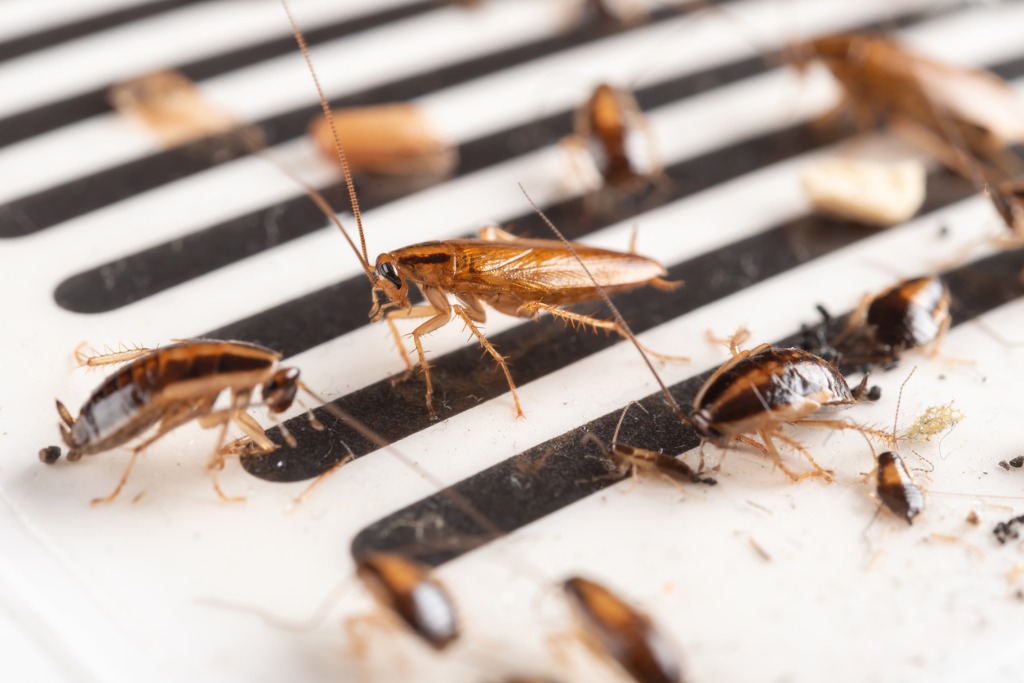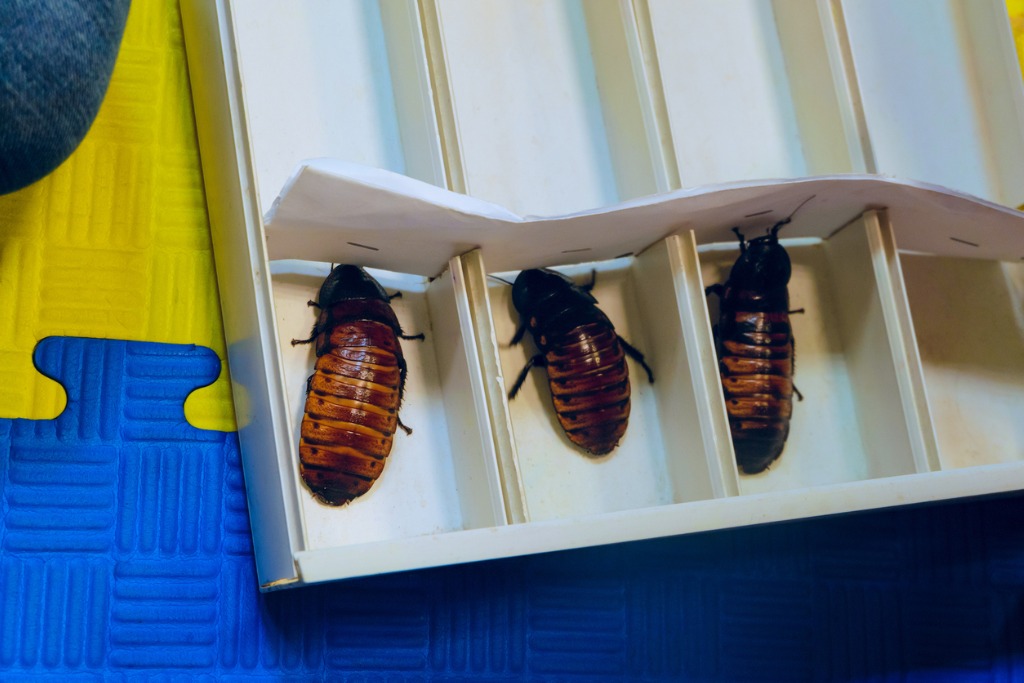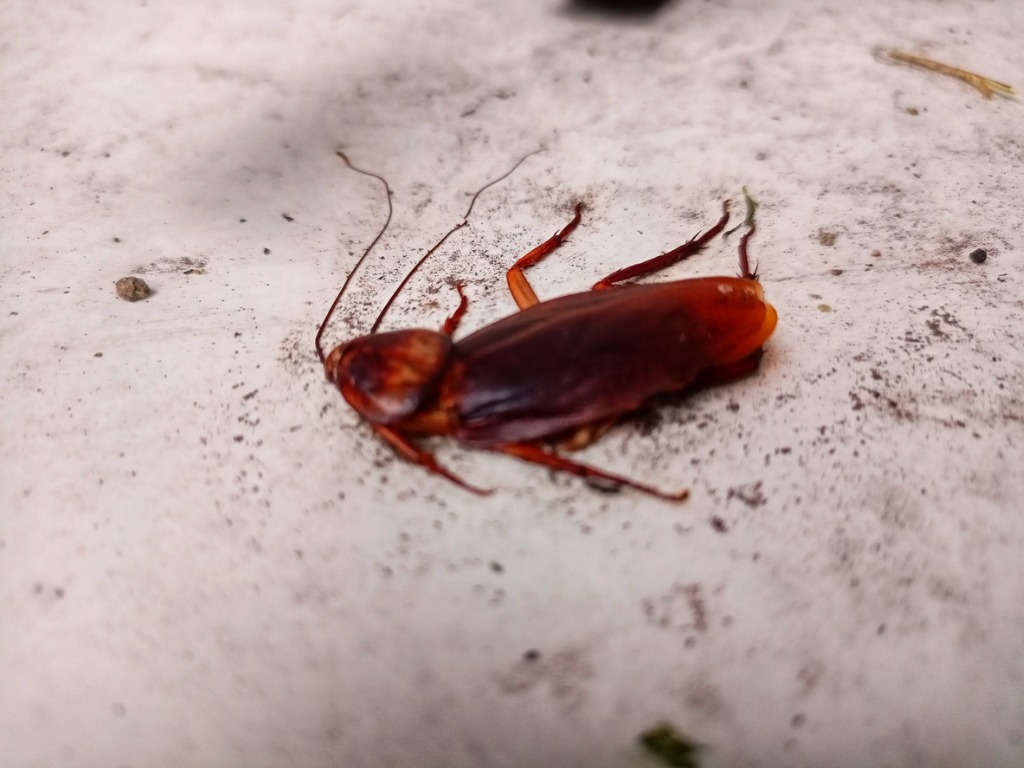Cockroaches are ancient insects that have been around for over 320 million years, outlasting even the dinosaurs in their longevity on Earth. These resilient creatures can be found in nearly every corner of the globe, with over 4,500 species identified so far. Despite their vast diversity, only a few species are commonly found in human habitats, often evoking strong reactions of disgust and revulsion. Among the myriad of species, the American and German cockroaches are perhaps the most notorious, frequently encroaching upon our homes and businesses. As we delve into understanding these particular cockroaches, it’s essential to recognize their unique characteristics, behaviors, and the challenges they pose.
Key takeaways
- Cockroaches are diverse species with unique habits and characteristics.
- American cockroaches are large, reddish-brown, and thrive in humid environments.
- German cockroaches are smaller, reproduce rapidly, and are common indoor pests.
- Oriental cockroaches prefer damp areas and may trigger allergies and asthma.
- Brown-banded cockroaches are skilled climbers and can contaminate food.
- Cockroach identification is crucial for effective pest control and health management.

American Cockroach (Periplaneta americana)
Description and physical characteristics
The American cockroach (Periplaneta americana) is a large insect, typically measuring 1.5 to 2 inches in length. It is reddish-brown to dark brown and has a distinctive yellowish figure-eight pattern on its thorax. They possess wings and long antennae.
Habitat and distribution
American cockroaches thrive in warm, moist environments, often inhabiting dark, humid places like basements, sewers, and crawl spaces. They are widespread across the United States and can be found worldwide.
Behavior and habits
These cockroaches are primarily nocturnal, active at night. They are omnivorous scavengers, reproduce rapidly, and can run quickly. Adults have a relatively long lifespan, and females produce multiple egg cases in their lifetime.
Health risks associated with American cockroaches
American cockroaches pose health risks, including allergen production, potential disease transmission (e.g., Salmonella, E. coli), food contamination, worsening asthma symptoms, and casing psychological stress. Effective pest control is essential to mitigate these risks.
Other Common Cockroach Species
- Oriental Cockroach: Dark brown to black, prefers damp areas, and is slower-moving.
- American Cockroach: Large, reddish-brown with yellow markings, commonly found in humid environments.
- Brown-Banded Cockroach: Small, light brown with distinctive light bands, and can live in various building areas.
- Asian Cockroach: Resembles German cockroaches but flies better and is attracted to lights.
Oriental Cockroach (Blatta orientalis)
- Description and Physical Characteristics: Oriental cockroaches are dark brown to black, with a shiny, smooth exoskeleton. They reach up to 1.25 inches (3.2 cm) in length, and the females are broader and shorter than males.
- Habitat and Distribution: They prefer damp and cool environments, often found in basements, crawl spaces, and sewer systems. They have a wide distribution in urban areas globally.
- Behavior and Habits: Oriental cockroaches are slower-moving and primarily nocturnal. They feed on organic matter and thrive in dark, humid locations. They tend to hide in cracks and crevices during the day.
- Health Risks Associated with Oriental Cockroaches: While not as common indoors as some other species, they can still carry pathogens and contribute to indoor allergen levels. Their presence can trigger allergies and asthma in sensitive individuals, and they may contaminate food and surfaces. Effective pest control is essential to minimize health risks.
Brown-banded Cockroach (Supella longipalpa)

1. Description and physical characteristics
Brown-banded cockroaches (Supella longipalpa) are small, about 1/2 inch (1.3 cm) in length. They have a light brown to tan coloration with distinct light bands across their abdomen. Both males and females have wings but are not strong flyers.
2. Habitat and distribution
These cockroaches are well-suited to indoor living and can be found in various areas within buildings. They don’t require as much moisture as other species and are commonly found in bedrooms, living spaces, and kitchens. They are distributed globally but are more prevalent in urban areas.
3. Behavior and habits
- Climbing: Brown-banded cockroaches are skilled climbers and can be found on walls and ceilings.
- Nocturnal: They are primarily active at night and hide in cracks and crevices during the day.
- Diet: Omnivorous, they feed on a range of materials, including food crumbs, starches, and non-food items.
4. Health risks associated with Brown-banded cockroaches
- Allergens: They produce allergens in their saliva, feces, and shed skin, which can trigger allergies and asthma in sensitive individuals.
- Food Contamination: Brown-banded cockroaches may contaminate food and food preparation surfaces, increasing the risk of foodborne illnesses.
- Psychological Stress: The presence of these cockroaches in living spaces can cause psychological distress and discomfort.
Smoky brown Cockroach (Periplaneta fuliginosa)
1. Description and physical characteristics
The Smoky brown cockroach (Periplaneta fuliginosa) is a large cockroach species known for its distinctive appearance. Adults typically measure between 1.25 to 1.5 inches (3.2 to 3.8 centimeters) in length. They have a glossy, dark brown to black exoskeleton, which gives them their characteristic “smoky” appearance. These cockroaches have long and slender antennae and wings that extend beyond the length of their bodies, and these wings are dark and translucent.
2. Habitat and distribution
Smoky brown cockroaches are commonly found in warm and humid regions. They are primarily distributed in the southeastern United States, including states like Florida, Texas, Louisiana, and Mississippi. However, they are also present in other parts of the world with similar climates, such as Central and South America, Africa, and Asia. These cockroaches prefer outdoor habitats, often residing in trees, leaf litter, and mulch. They can also infest human-made structures, especially if those structures offer access to food and moisture.
4. Health risks associated with Smoky brown cockroaches
- Allergies: Cockroach allergens, found in their saliva, feces, and shed skin, can trigger allergic reactions in some individuals. These allergies can manifest as respiratory problems, skin rashes, and other allergic symptoms.
- Disease Transmission: Although less common than some other pests, cockroaches can carry and potentially transmit diseases such as salmonella, E. coli, and various pathogens. Contamination of food and food preparation surfaces can lead to the spread of these diseases.
- Asthma Aggravation: The presence of cockroaches indoors can exacerbate asthma symptoms, particularly in individuals with sensitivities to cockroach allergens.
The Role of Cockroaches in Ecosystems

Ecological significance
Cockroaches play a crucial role in ecosystems by serving as efficient decomposers. They break down decaying organic matter, facilitating nutrient recycling. This process enriches the soil with essential nutrients and supports plant growth, forming the foundation of terrestrial food chains. Additionally, cockroaches contribute to soil aeration through their burrowing activities, which enhances soil structure and improves water infiltration, benefiting the overall health of ecosystems.
Interactions with other species
Cockroaches interact with various species within their ecosystems. They are a vital food source for birds, amphibians, reptiles, and some insects, contributing to the balance of food chains and webs. However, they can also compete with other detritivores for resources, potentially influencing the distribution and abundance of decomposer species. In human environments, cockroaches may carry and transmit disease-causing microorganisms, posing health risks to both humans and other animals in shared habitats. Thus, cockroaches, despite their negative reputation, play complex and multifaceted roles in ecosystems, impacting nutrient cycling, species interactions, and, in some cases, public health.
Importance of Cockroach Identification
Pest control and management
Accurate identification of cockroaches is essential for effective pest control and management. This identification enables pest control professionals to tailor their strategies for tackling these resilient pests. Different cockroach species exhibit distinct behaviors and vulnerabilities to specific insecticides. Knowing the exact species at play allows for the precise selection of treatment methods. This not only increases the chances of success but also reduces the likelihood of pesticide resistance development. Moreover, it ensures the efficient allocation of resources and efforts, as control measures can be targeted specifically to the identified species. Rapid identification also aids in preventing the spread of infestations, as it enables prompt action to isolate and treat affected areas, preventing roaches from migrating to other parts of a building or neighboring properties.
Health Implications
Identifying cockroach species carries significant health implications. It directly impacts healthcare and disease control efforts in the following ways. First, it is crucial for the diagnosis and management of allergies and asthma triggered by cockroach allergens. Different cockroach species produce varying levels of allergens, and precise identification assists healthcare providers in understanding and addressing these allergic reactions effectively. Second, certain cockroach species can act as vectors for diseases like salmonella and E. coli. Knowing the species involved is instrumental in assessing and mitigating health risks associated with these pathogens. Additionally, it aids in contact tracing during disease outbreaks linked to cockroaches, helping to contain the spread of illnesses.
Prevention strategies
Tailoring prevention strategies based on cockroach identification is a fundamental aspect of effective pest management and public health. By identifying the specific cockroach species, it becomes possible to develop targeted prevention approaches. This customization extends to various facets of pest prevention. For instance, if the identified species prefers outdoor habitats, preventive measures can be emphasized in these areas. Furthermore, sanitation practices can be fine-tuned, as different species are attracted to distinct food sources and environmental conditions. Lastly, species-specific identification guides the selection of monitoring tools and traps. This ensures early detection of infestations, facilitating timely intervention and preventing pest-related problems from escalating. In summary, cockroach identification is a cornerstone of pest control, health management, and proactive prevention.
Conclusion
Understanding the different types of cockroaches is essential for effective pest control and prevention. While American cockroaches are the largest and most common in North America, German cockroaches pose a significant problem due to their rapid reproduction and ability to infest homes and businesses. Oriental and brown-banded cockroaches may not be as prevalent, but they can still cause damage and spread diseases. By identifying the specific species of cockroach present, homeowners and pest control professionals can develop targeted strategies for eradication. Taking proactive measures such as maintaining cleanliness, sealing entry points, and seeking professional assistance when needed can help prevent infestations. Let us remain vigilant in our efforts to keep these unwanted pests out of our living spaces.
FAQs
What are the main differences between American and German cockroaches?
American and German roaches are distinct species with varying sizes, behaviors, and habitats. American roaches are larger and tend to prefer outdoor environments, while German roaches are smaller and are commonly found indoors. German roaches are also known for their rapid reproduction rates, making them a common household pest.
How can I identify American cockroaches in my home?
American cockroaches are reddish-brown and can grow up to 1.5 inches in length. They have wings and are capable of flight, although they prefer to run. You may find them in damp, dark areas like basements, crawl spaces, and sewers.
What are the signs of a German cockroach infestation?
German cockroaches are light brown or tan, with two distinctive parallel lines running down their backs. Signs of an infestation include sightings of these roaches, especially in kitchen and bathroom areas, as well as finding their small, dark droppings resembling ground pepper.
Are cockroaches dangerous to health?
Yes, cockroaches can pose health risks. They can carry and transmit disease-causing bacteria, including Salmonella and E. coli, through their feces and body parts. Their presence in homes can exacerbate allergies and asthma symptoms in some individuals.
How can I prevent and control cockroach infestations?
To prevent cockroach infestations, maintain a clean and dry home, store food in sealed containers, and fix any plumbing leaks. If you suspect an infestation, consult a pest control professional for effective removal methods, as roaches can be resilient and challenging to eradicate with DIY approaches.

